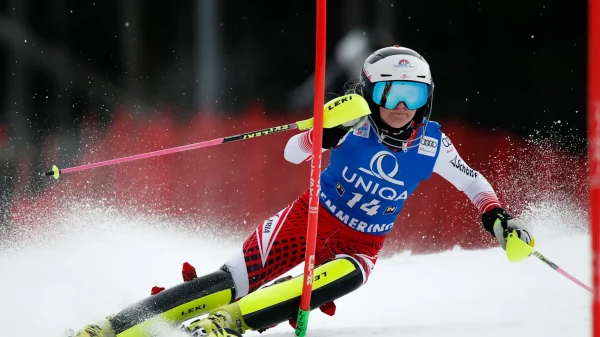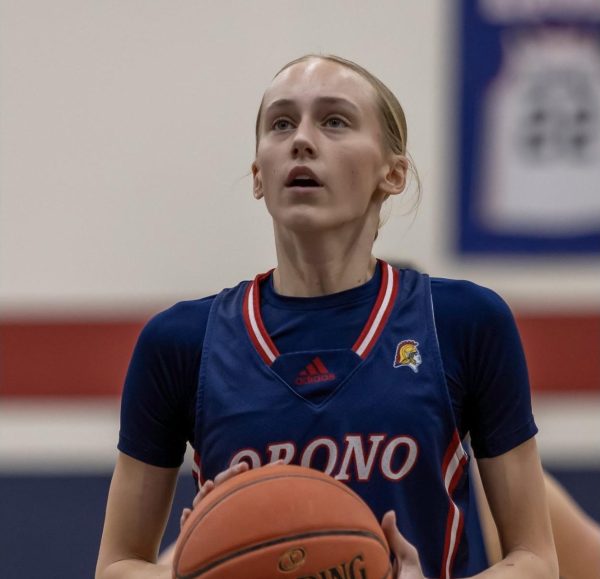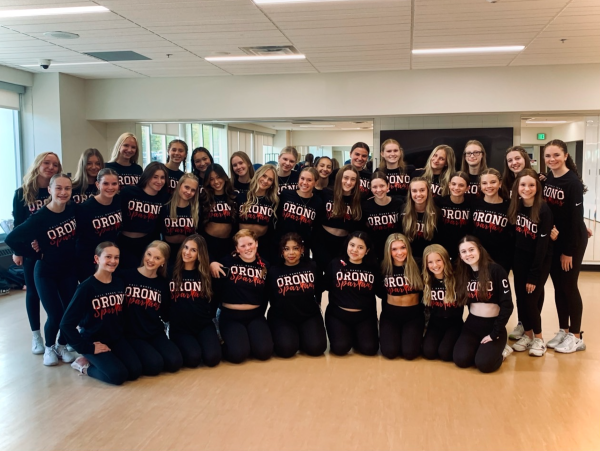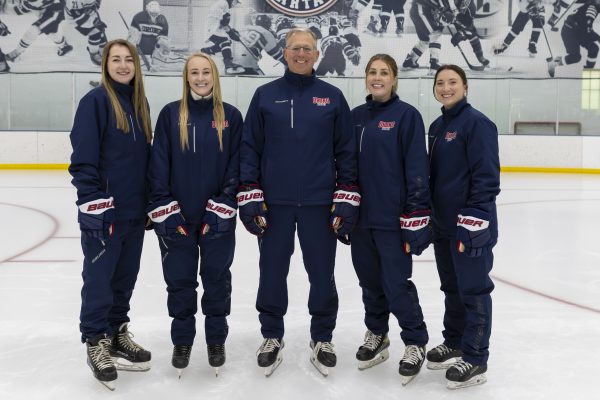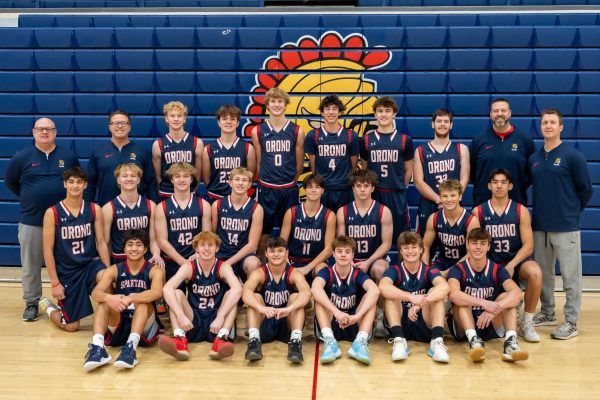Rowing Club Meets Year With New Changes

Located just behind Birch’s On the Lake and hidden partially by pine trees, are racks of bright race boats– aerodynamic and thin like the pine needles on the ground below them. The boats belong to Long Lake Rowing Crew, a non-profit rowing club that offers classes and team opportunities for youth and adults in the area. Many Orono students are part of the Juniors Program, a team of Long Lake area kids from grades 8 to 12.
The club was founded in 2014 with the help of local parents, rowers, and government and business leaders, according to the Long Lake Rowing Crew’s official website. The group effort that brought it to life instilled a community and teamwork centered feeling that still persists.
Although the rowing team has fewer high school participants than other sports, LLRC’s rowing program boasts successes on the lake, in team spirit, and in the college recruitments older members have received. Last season, LLRC had 15 members who helped win the team the Junior Points Trophy and the Efficiency Trophy at the North West International Rowing Association Championship, according to new Head Coach Sandi McCarthy. Many team members also progressed to Nationals, and placed Top Ten at the Head of the Charles–the world’s largest regatta (rowing race).
Because rowing is not a sport offered at most high schools, OHS members of LLRC have the opportunity to row with students from Wayzata, Breck, Blake, Minnetonka and others. Together, the rowers travel to various regattas, and get to know each other along the way.
“Some of our regattas are in Canada, so there is a lot of travel time, but that’s just more bonding time,” sophomore Anna-Maya Sipila said, “Spending almost 20 hours in a car together in one weekend really brings people together.”
This year, after McCarthy’s recruiting endeavors, the team has doubled in size and is planning to add 15 more members this summer. The increased size has caused divides between the Varsity and Novice rowers, however with time, McCarthy and other team mates expect the rifts to close.
“By the end of the summer, it’s super cool because everyone is really great friends,” senior Sam Fischer said, “Age does not matter–I’m still friends with my rowing friends I made freshman year, and they’re like 3 years older than me.”
Fischer will be leaving the Juniors program next year to row for Boston University, which is a Division 1 collegiate rowing program according to the National Collegiate Athletic Association. Fischer said she began rowing her freshman year of high school, because her older sister was part of the LLRC Juniors program. Before her own hour and a half practices, she would stick around for the Varsity practices, sit with the coach and watch. She said this quickly helped her improve from being the worst rower on the team.
Some of our regattas are in Canada, so there is a lot of travel time, but that’s just more bonding time. Spending almost 20 hours in a car together in one weekend really brings people together.
— Anna-Maya Sipila
In the past, LLRC has had tremendous success in sending their rowers to college rowing programs. Former Juniors rowers have also been recruited by Williams College, the University of Minnesota, The University of Washington, the University of Virginia and Notre Dame, according to the LLRC website. However, Fischer said that a common misconception is that full scholarships are easy to receive.
On average, Division I schools set aside around $250,000 in aid for rowing. For Division II schools the average aid is $46,000, according to the NCAA. With 40 to 60 rowers, the amount of aid shrinks when divided between them, so 10 to 15-percent scholarships are more common, Fischer said.
There are less than 150 colleges that offer college rowing, according to the Next College Student Athlete (NCSA) website. Because rowing is a less common sport, McCarthy said that there are less athletes to compete with than in more popular activities like football or basketball.
“You still have to have skill, and you still have to be good. They’re not just going to take anybody, and they’re certainly not going to offer a scholarship to someone who doesn’t have great potential,” McCarthy said.
Recruits also have a greater emphasis on academics than other sports, since rowing is more common at prestigious colleges, such as Harvard or Boston University, according to the Athletics Recruiting website.
A large reason why rowing is less common is the expense and necessary location. McCarthy said these factors sway many high schools away from starting rowing clubs, so many kids don’t know about the rowing opportunities in their community. But for those who have yet to find solace in ball-sports, rowing just might be for them.
“Sometimes I specifically look for kids who aren’t good at what we call traditional American sports,” McCarthy said, “It’s actually very physically demanding, and the technique is very complicated. But it’s a different kind of complicated than having to catch a ball or throw a ball, so it is possible that kids that aren’t in athletics actually do very well at rowing.”
Although Fischer trained diligently to reach the collegiate skill level, and Team U.S.A’s successes this past Olympic Games have made the image of the athletic rower more public, that does not have to dissuade less serious athletes from the sport. Rowers are welcome on any spectrum of commitment.
“You can go as far in rowing as you want, or you can stay as far back,” sophomore Drew Mitchellette said, “There is no super intense pressure to succeed– if you just want to come a couple times a week just to get exercise, you can do that. But if you want to train for national regattas, you can do that as well.”
Despite its young age, the Long Lake Rowing Crew has channeled together a solid group of Juniors, and is slowly getting their reputation out in the rowing community. McCarthy said that throughout her entire coaching career, she has observed that rowing seems to attract “good people”, and this year is no exception. Even though the team is working to integrate the surge of novices with the experienced rowers, LLRC is on the path to a rewarding year.
“My favorite part of rowing is the teamwork,” Sipila said, “When everybody is working together, in sync, and moving along the water it is in

Hello! My name is Cari Spencer and I am one of the Co-Editors in Chief. I’m a junior in Journalism II and have been writing articles for The Spartan...



